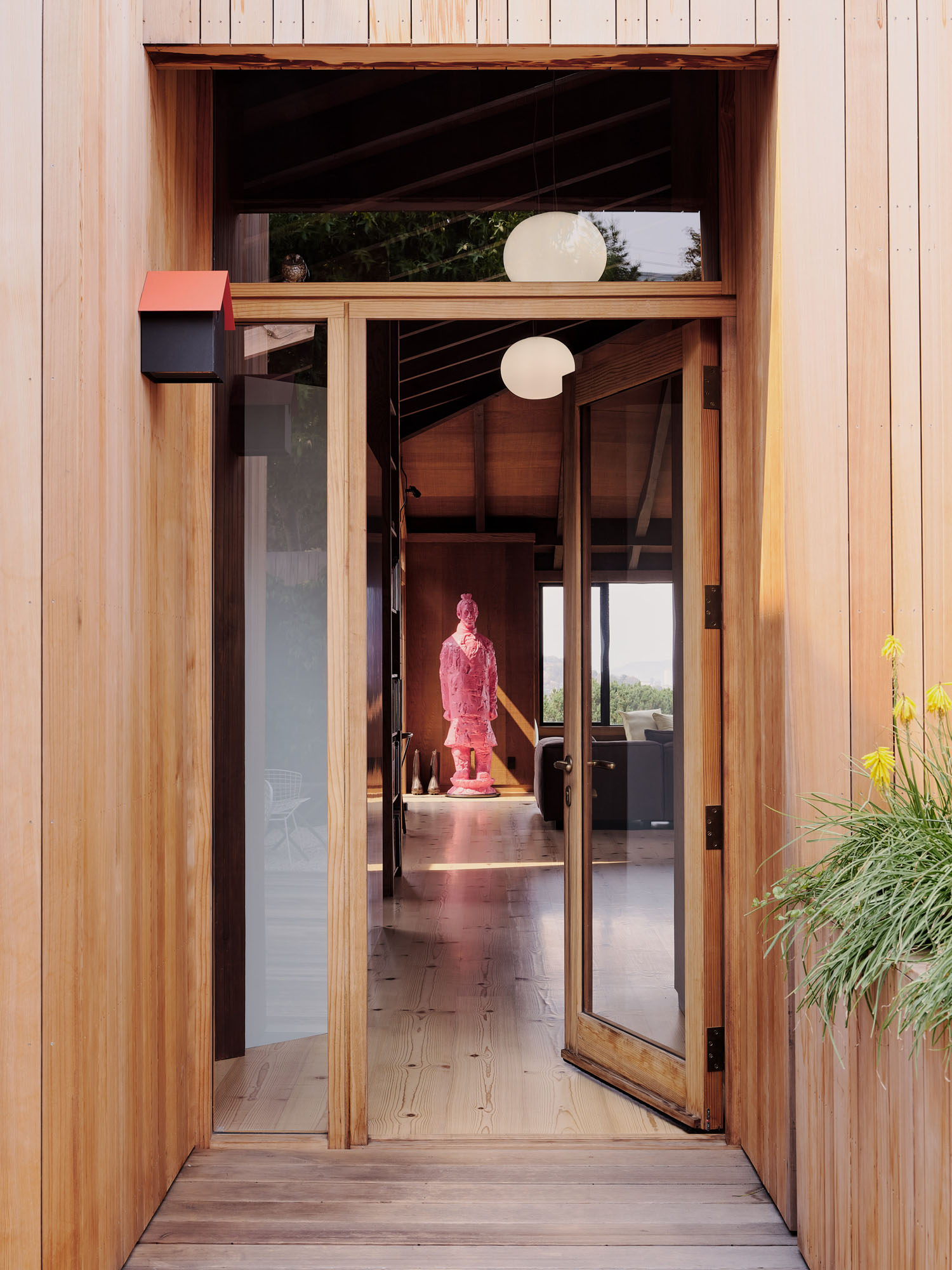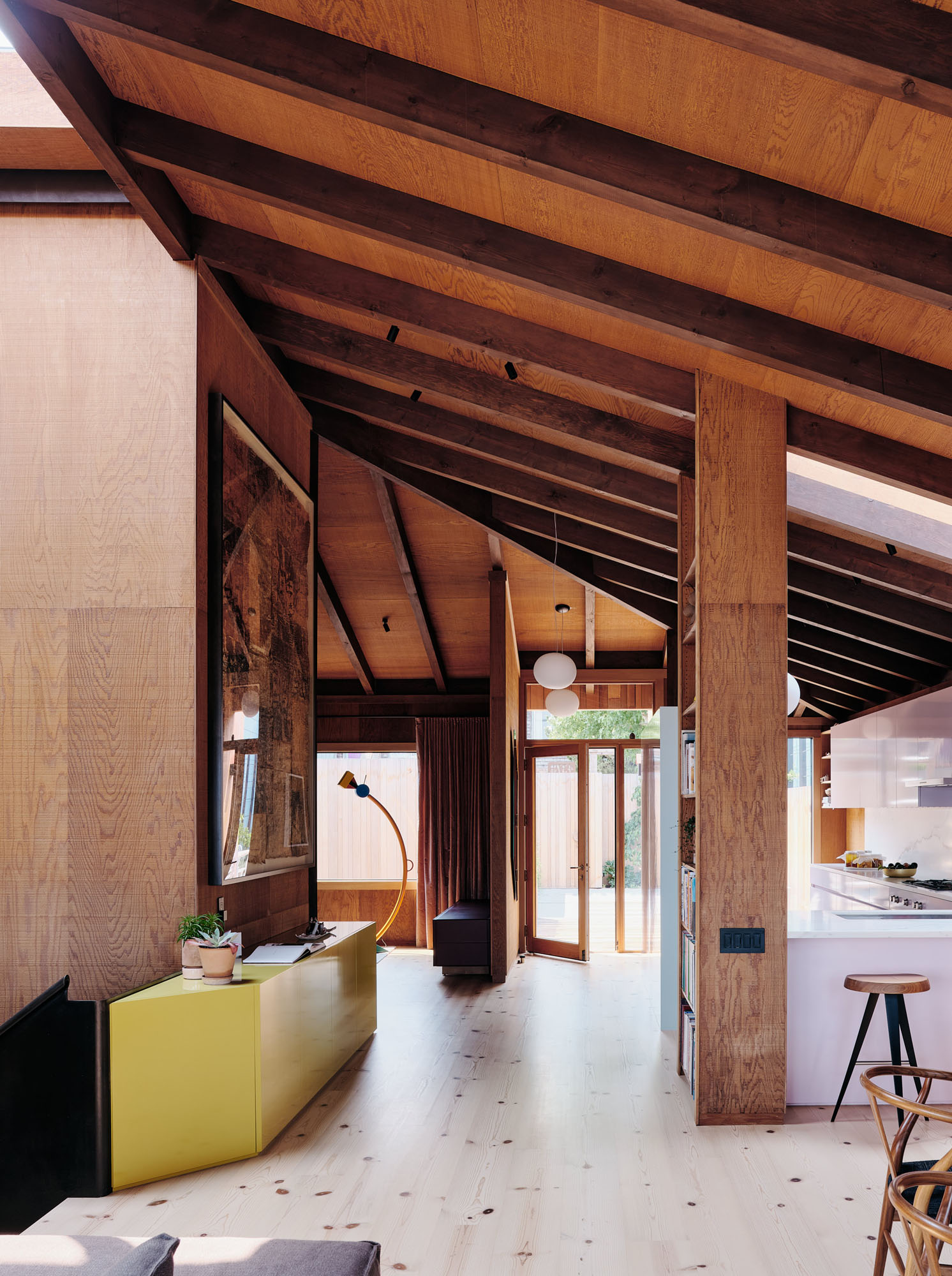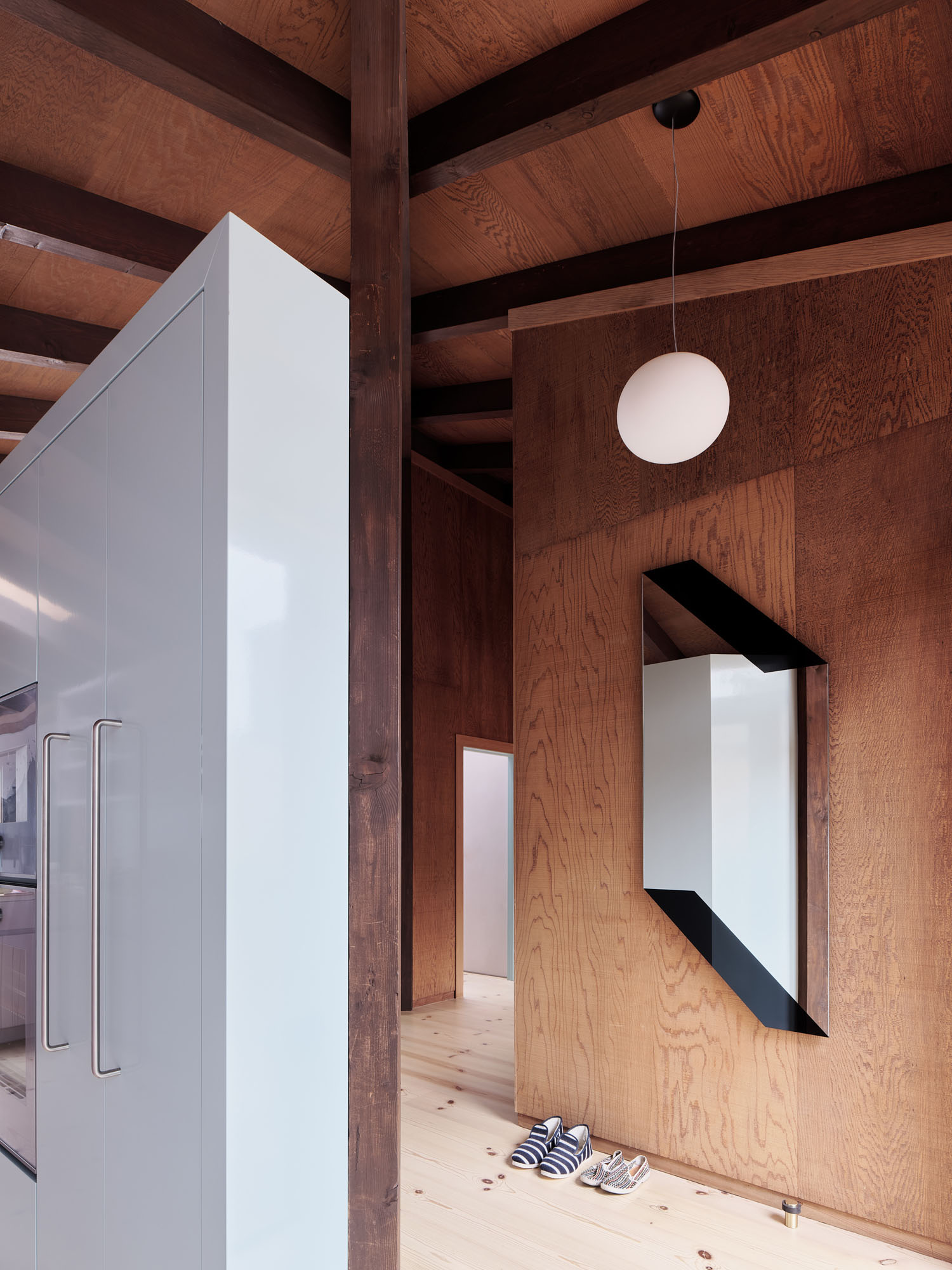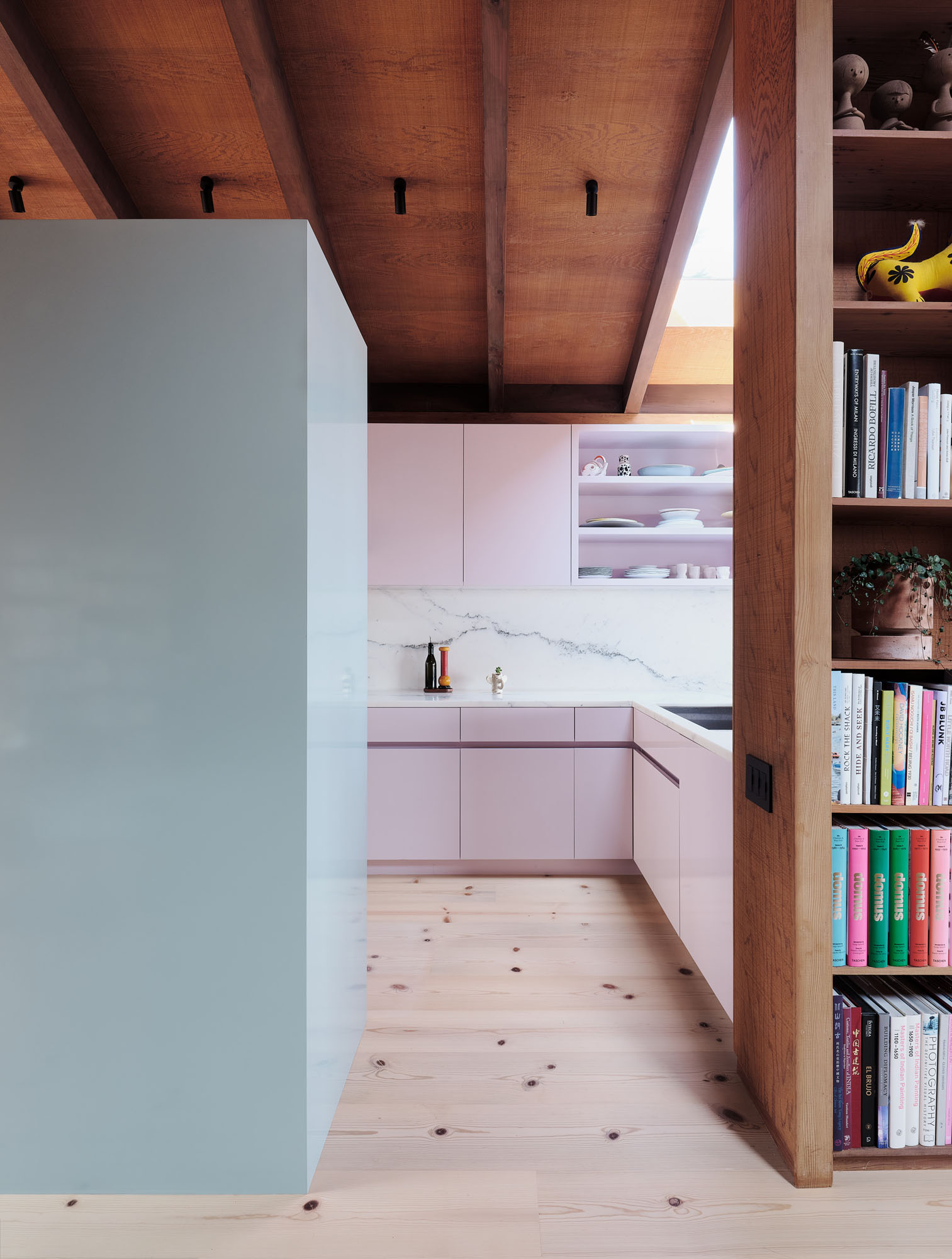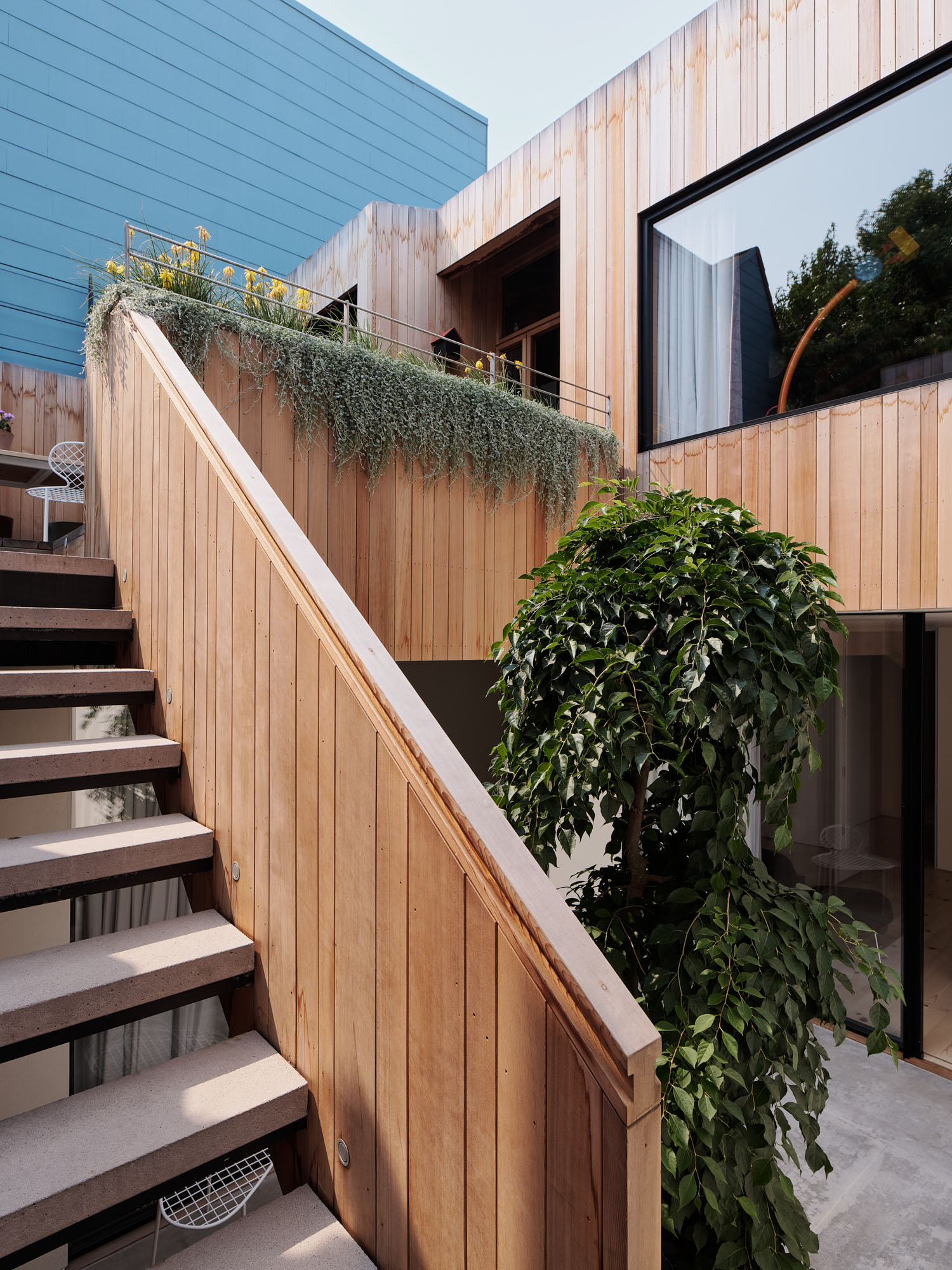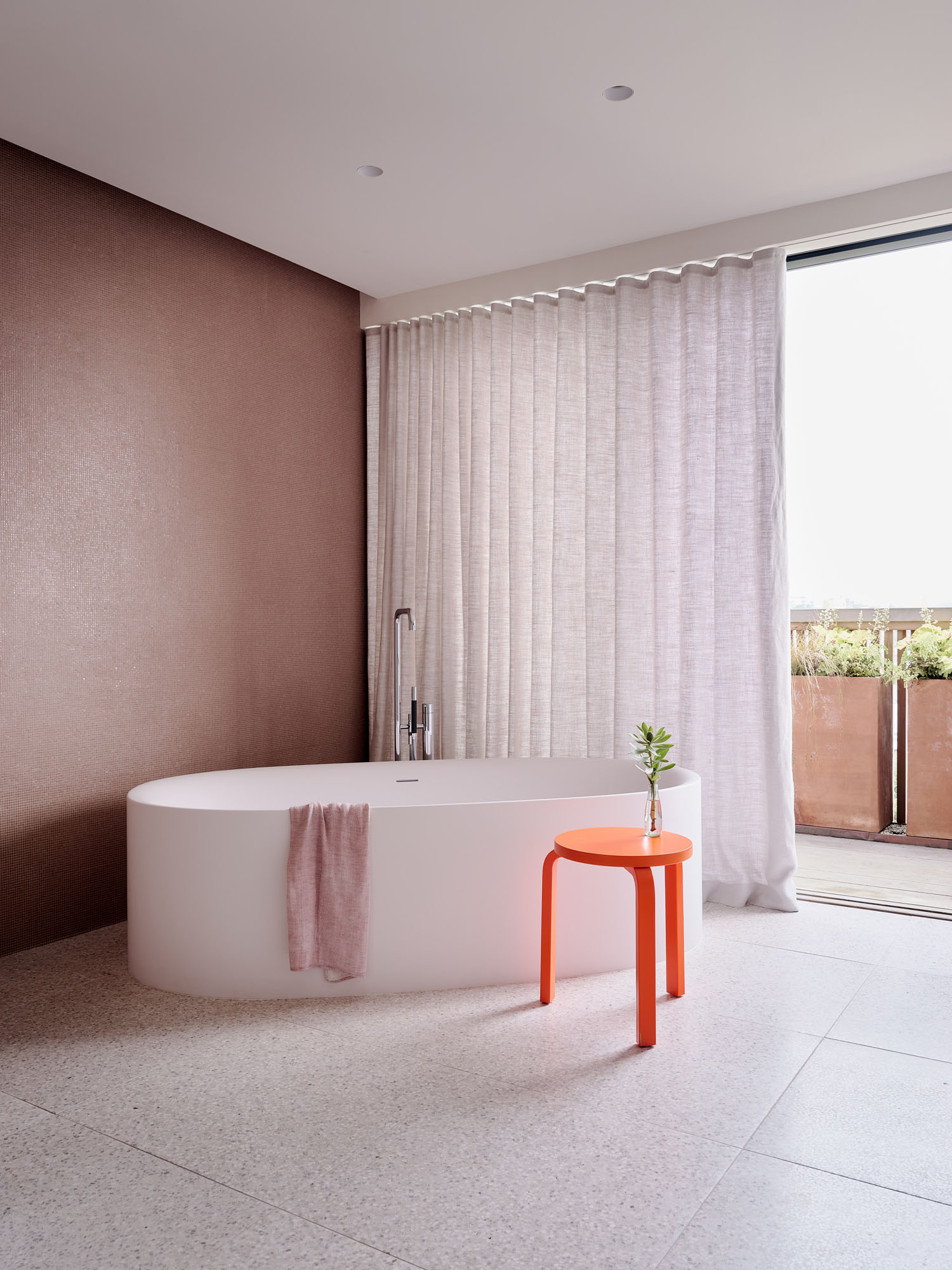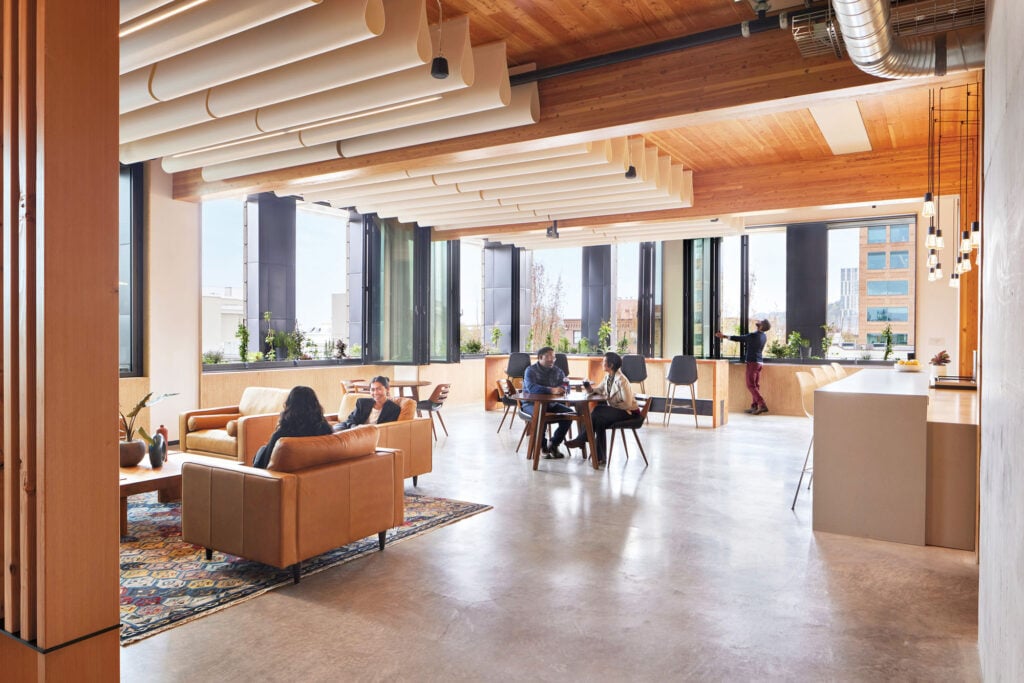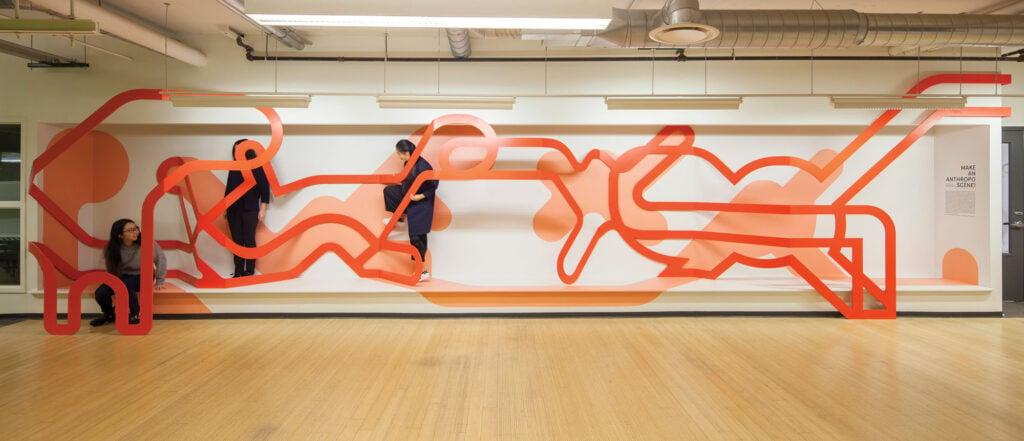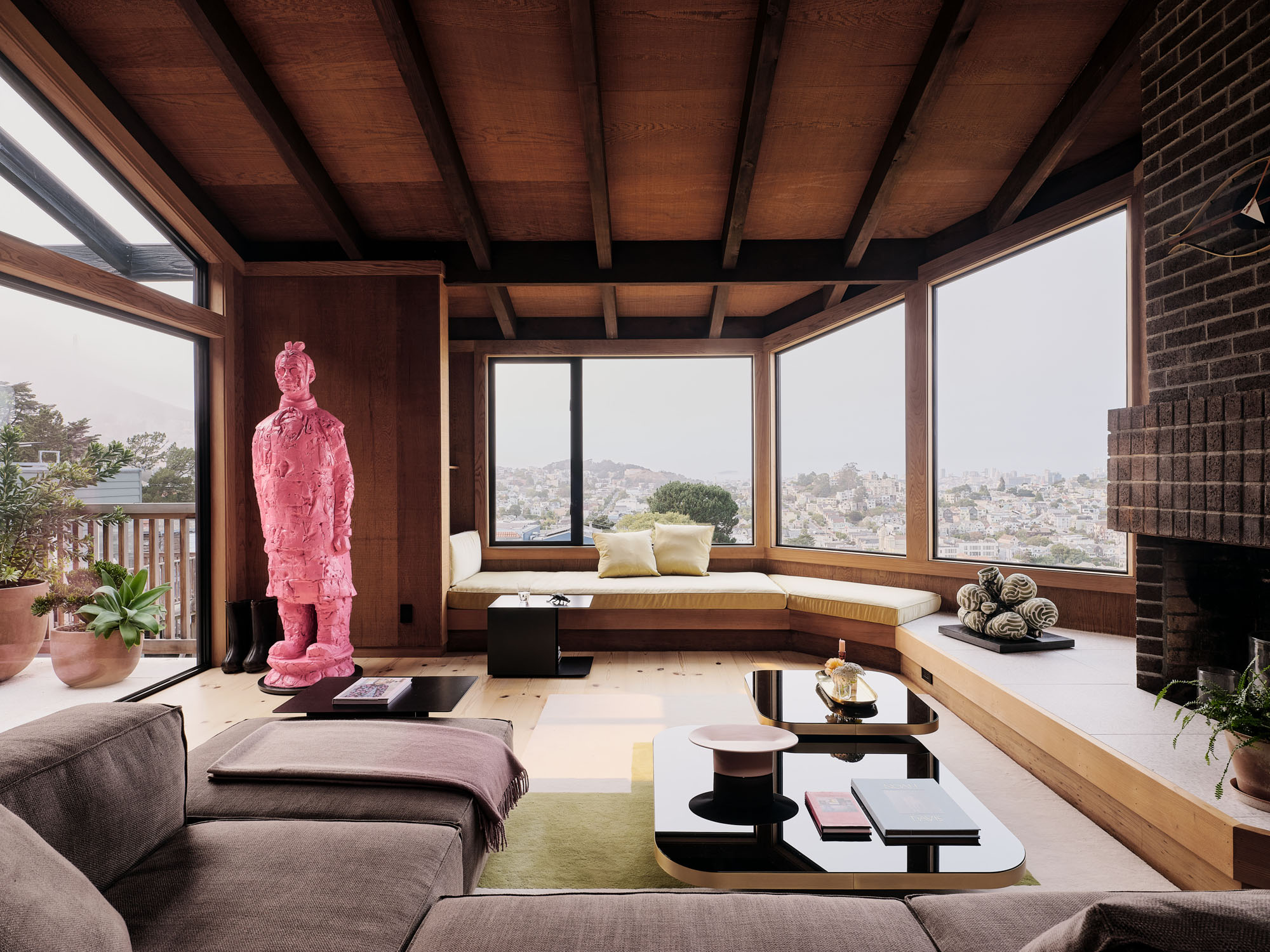
December 9, 2022
Studio Terpeluk’s Redwood House Pays Homage to Albert Lanier
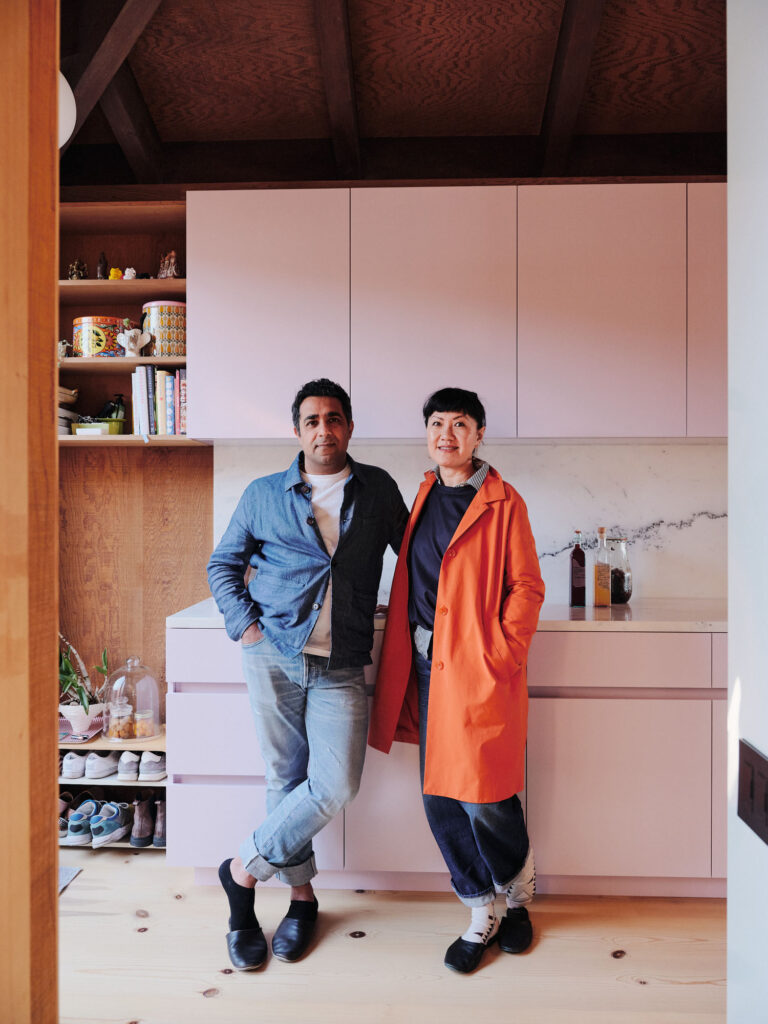
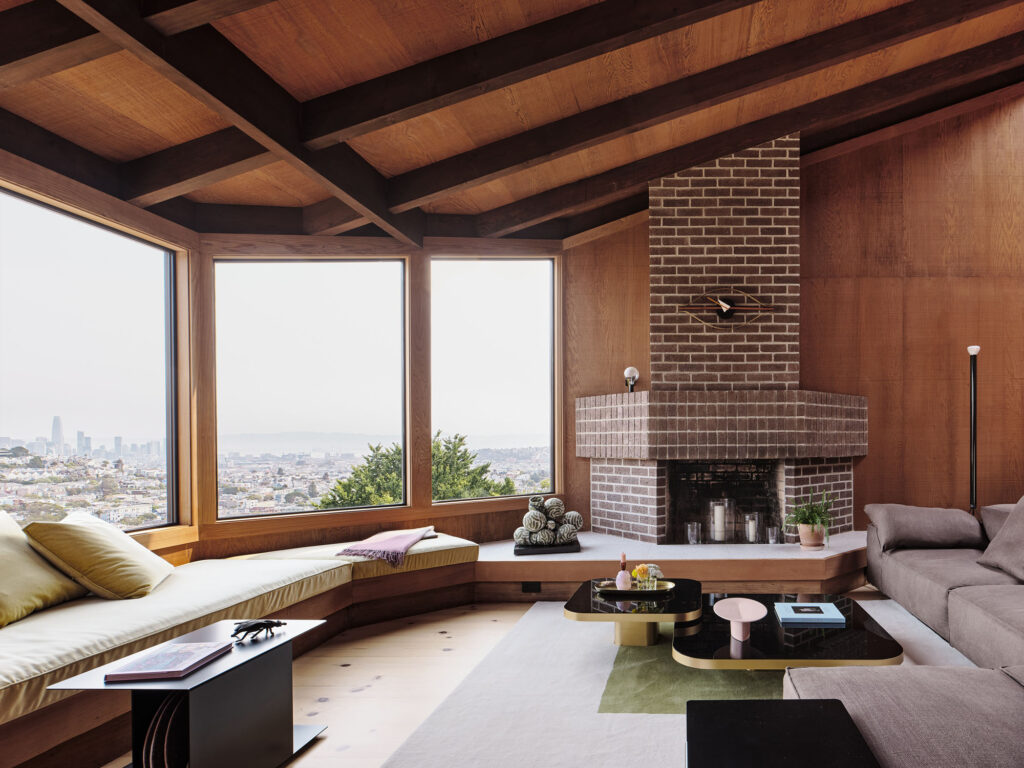
The brief requested an increase to the structure’s volume while maintaining its original design language as defined by angular geometries, distinct redwood interior, and various tiered courtyards. Fully realized after several years, the seemingly effortless intervention includes a new guest room suite, a home office, a wet bar, and a media room bringing the habitable space from 2,260 to 3,218-square-feet.
The home’s exterior and cascading courtyard enclosures were reclad in irregular western red cedar planks. In an ode to the redwoods with which they are lined, the overhangs allow for diffuse light to permeate the canopy during winter months while providing shade during the summer. Visitors are welcomed by the property’s upper level from the street through a wooden rainscreen to be received in the entry courtyard paved with precast concrete and redwood decking.
The open-plan upper living quarters feature dark-knotted Douglas fir boards underfoot while redwood surfaces and sloping structural elements continue to draw the eye in to command an expansive view over the city. A vapor glass custom cabinet to the left hides the kitchen’s element of utility while enabling flow into the dining area. To the right of the kitchen, looking towards a more private courtyard, is the library with a writing desk situated with floor-to-ceiling built-in bookshelves. The perimeter of space is marked by an upholstered seating area that meets a grand brick fireplace.

Light falls from a glazed shaft above the living room to illuminate the sculptural blackened steel star with rough-sawn redwood walls––a fixture that anchors the house and imbues the renovation with the architect’s own visual language. “The stair handrail which seamlessly transitions from flat to curving was designed to dignify this material property and provide a pleasurable tactile sensation,” says Studio Terpeluk owner Brett Terpeluk. “The visual simplicity of the design belies the challenge and complexity of its fabrication.”
The middle level is marked by lighter floors and features the guest suite with a private lounge area and a patio with direct access to the entry courtyard. The primary bedroom and ensuite continue the warm color story as the bathroom feature a mixture of light pink terrazzo tiles and a micro mosaic in recycled plastic tiles of Indian red. A continued descent to the lowest level finds a media room, home office, and kitchenette that still enjoy an abundance of natural light that pours in through the varied vegetation of the exterior courtyard just beyond the walls.
Monica Viarengo, Italian landscape designer and Terpeluk’s wife, fashioned the outdoor areas to create unique green hideaways. The corollary design narrative is expressed through fragrant flora that evolves as one moves about the property with “a changing palette of soft seasonal blooms and slow progression from the curated to the embrace of the wild.”
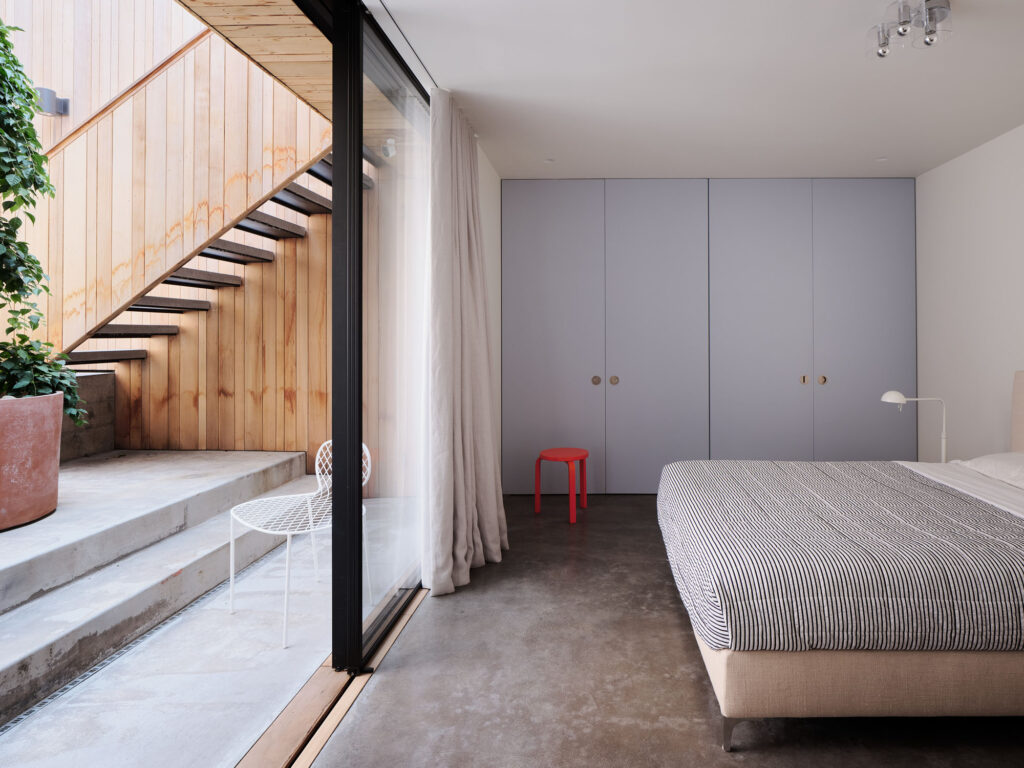
The studio consulted designer and color expert Beatrice Santiccioli to create an organic, flexible palette to be bright or mutable as it adjusts to function and scale. “At the main level, the bold colors selected create a musical dialogue with the deep red hues of the redwood surfaces bringing focus to the intervention while also giving new life to the vintage house geometry” says Terpeluk. “The soft color palette of the compressed lower levels reflects the subtle and changeable spectrum of light influenced by the daily ebb and flow of fog cover.” Terpeluk offers a masterclass in collaboration and contemporary design with a reverence for history, materials, and the natural elements.
Would you like to comment on this article? Send your thoughts to: [email protected]
Latest
Projects
5 Buildings that Pushed Sustainable Design Forward in 2022
These schools and office buildings raised the bar for low-carbon design, employing strategies such as mass-timber construction, passive ventilation, and onsite renewable energy generation.
Projects
The Royal Park Canvas Hotel Pushes the Limits of Mass Timber
Mitsubishi Jisho Design has introduced a hybrid concrete and timber hotel to downtown Hokkaido.
Profiles
Meet the 4 New Design Talents Who Made a Mark This Year
From product design to landscape architecture and everything in between, these were the up-and-coming design practices making a splash in 2022.


